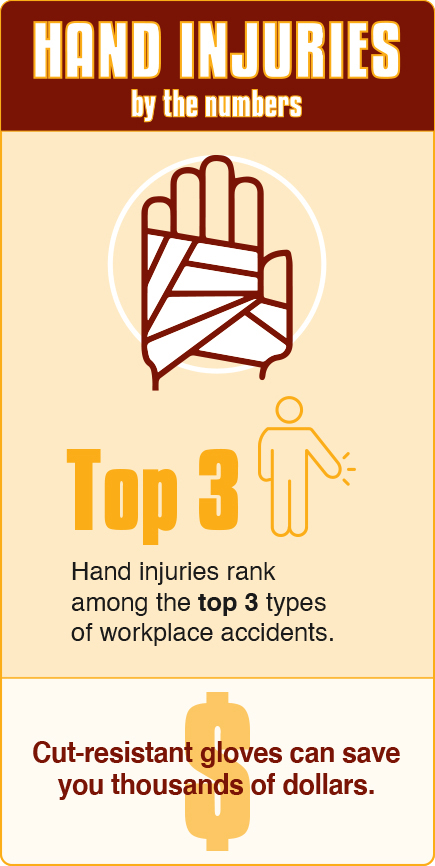Safety First Helps Control Costs
Making safety a priority is a good economic decision. Preventing injuries in the first place with the proper use of PPE is
an effective method of controlling the high costs associated with injuries. Despite the best efforts made by industry, compliance
remains a problem.
Examining the Need for Protection: Some Statistics
- In 2013, the Bureau of Labor Statistics, U.S. Department of Labor, reported 109.4 cases per 10,000 full-time workers, a total of 1,162,210 days-away-from-work cases in private industry, state government and local government.
- The median days away from work to recuperate was 8 days in 2013.
- There were 4,405 injuries that led to fatalities.
- 699 of those were from falls, trips or slips.
- 330 were from exposure to harmful substances or environments.
- Incidence rates and counts for private sector heavy and tractor-trailer truck drivers, as well as food preparation workers, each increased in 2013.
Protective equipment may have prevented a significant number of these accidents that, on average, cost approximately $37,000 per incident and $1,390,000 per fatality (2013, National Safety Council). Costs include estimated wage losses, medical expenses, administrative and employer costs per worker, plus environmental and repair costs, for a total cost to American industry of $188.9 billion in 2011.
Contrast that with the fact that an effective safety/health program can save time and money (about $4 for every dollar spent) while increasing productivity and reducing worker injuries, illnesses and related workers’ compensation costs (OSHA 3151-12R, Personal Protective Equipment).
It is clear that better strategies are required in the area of workplace accident prevention.
